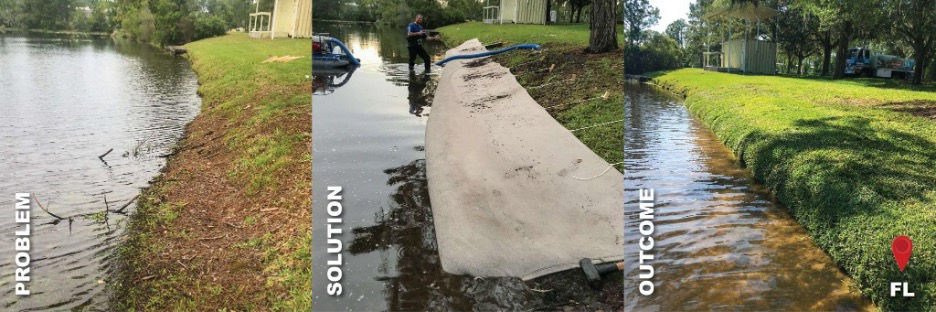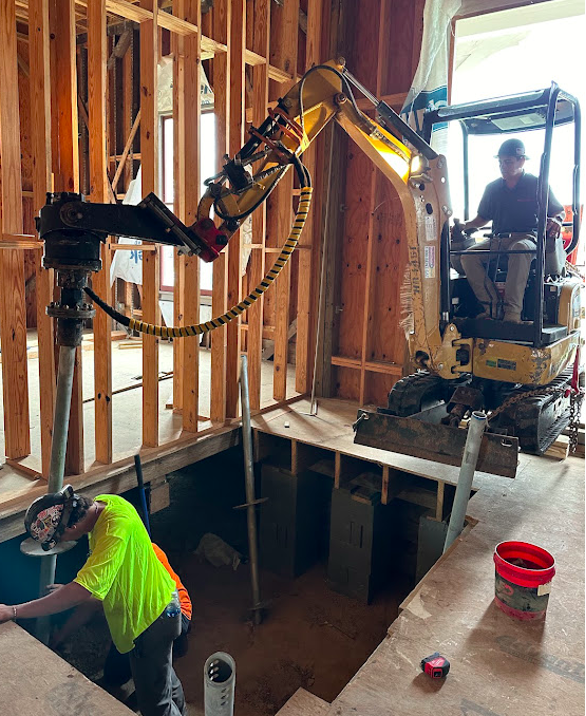Six Common Questions About Foundation Repair in Mississippi - Answered!
- burns68
- Mar 21, 2024
- 4 min read
Foundation repair in Mississippi refers to the processes and services aimed at addressing issues related to the foundations of buildings and structures. Mississippi's unique geographical and climatic conditions, including its soil composition and moisture levels, often pose challenges to the stability and integrity of structural foundations.
Mississippi’s soil, particularly in areas like Jackson, is known for its clay content, which can expand and contract significantly with moisture changes. This can lead to various foundation problems such as settling, cracking, and shifting. Fortunately, foundation repair has come a long way and now involves methods like polyurethane foam injection (poly foam lifting).
This modern, less invasive method injects high density foam into the ground beneath the foundation, lifting and stabilizing the foundation by filling in voids and compacting loose soil. Other repair methods exist as well, including underpinning, drainage correction and root barriers. However, polyurethane injections are the preferred approach.
Below we answer six common questions regarding foundation repair in Mississippi. Stay tuned for Part 2 coming at a later date, as we will address more questions!
1. How much does it cost to adjust a foundation?
The cost of adjusting or repairing a foundation can vary widely depending on several factors, including the extent of the damage, the repair method chosen, the size and construction type of the home and its geographical location.
Small crack repairs, on average, usually range between $250 and $800. Major repairs involving hydraulic piers cost between $10,000 and $20,000. It’s important to get multiple quotes from reputable foundation repair companies in your area to better determine the specific costs involved in your situation.
2. Can the foundation of a house be fixed?
Yes, the foundation of a house can be fixed, and there are several methods and technologies available to address various types of foundation problems. The key to effective foundation repair lies in accurately diagnosing the underlying issue(s) and selecting the appropriate repair method.
The most common causes of foundation problems in Mississippi homes include poor drainage, frequent seasonal changes, clay soil, flooding, and deterioration. Fortunately, polyurethane foam injections not only lift your foundation but also address these underlying issues.
3. Can you live in a house that is jacked up?
Living in a house that is being jacked up, or lifted, for foundation repairs or adjustments is possible. However, whether it's advisable or practical depends on several factors, including its structural integrity, utilities, the length of the project and local regulations.
For example, lifting a house often involves disconnecting and later reconnecting utilities, which can make living in the home inconvenient or even unfeasible. We also recommend consulting with your insurance company, as they might have stipulations about occupancy. Additionally, quality foundation repair company will conduct a full assessment to ensure your home is safe to reside in.
4. What does foundation repair consist of?
Foundation repair can encompass a variety of methods and procedures aimed at addressing and fixing issues with a building's foundation. The specific approach depends on the nature and severity of the foundation problems, the type of foundation, the underlying cause of the issue and the soil characteristics of the property.
Since Foremost Foundations and Construction mainly uses polyfoam injections to repair foundations, here is what you can expect from the process:
Assessment and planning. One of our specialists will conduct a thorough inspection of your foundation to determine the extent of the damage and the suitability of polyurethane foam injection.
Preparation. The work area around the foundation is prepared and small holes (typically ⅝ inch or about 16mm in diameter) are drilled through the slab or foundation at strategic locations.
Injection process. A two-part polyurethane liquid is injected through the holes using specialized equipment. The liquid flows into the voids and under the foundation. It rapidly expands and hardens, turning into high-density foam. This restores the foundation to its original position, or at least close to.
Precision lifting and monitoring. The process is carefully monitored to achieve the desired lift and stabilization. The injection process is repeated at multiple points along the foundation, as necessary.
Cleanup and finishing. Once the lifting and stabilization are complete, the injection holes are filled and sealed, and any surface irregularities are smoothed out. The work area is also cleaned up.
5. Is it safe to live in a house with foundation problems?
Living in a house with foundation problems can pose various risks and challenges, depending on the severity and nature of the issues. While minor cracks and settling might not immediately affect the safety of the occupants, significant foundation damage can lead to serious structural problems that compromise the safety and integrity of the house. Schedule a professional inspection to determine the extent of the damage and whether or not your home is safe to live in.
6. What type of foundation repair is best?
Polyurethane foam lifting, also referred to as polyjacking, has become a preferred method for foundation repair and concrete leveling for several reasons. This technique offers a range of benefits over traditional methods like mud jacking or mechanical underpinning.
Here are key reasons why polyurethane foam lifting is considered a superior choice for many foundation repair projects:
Speed of application. The foam expands and cures within minutes.
Minimal disruption. Only small holes need to be drilled into the concrete. This minimal disruption means less noise and mess, and holes can be easily patched and concealed.
Lightweight material. Polyurethane foam is lightweight and provides the necessary lifting without adding weight to the soil.
Durability. Polyurethane foam is durable and resistant to water, chemicals, and erosion. Once cured, it provides a long-lasting, permanent solution.
Precision lifting. The expansion of the foam can be carefully controlled, allowing for precise lifting.
Water resistance. With its ability to repel water, polyurethane foam helps mitigate problems related to moisture.
Environmentally friendly. Since poly foam products are made with environmentally safe materials, they minimize the ecological footprint of the repair process.
Cost effective. Given its durability and minimal disruption, polyurethane foam lifting is more cost effective in the short- and long-term.
To schedule an inspection and estimate for foundation repair in Mississippi, contact Foremost Foundations and Construction today at 601-405-1052.





Comments